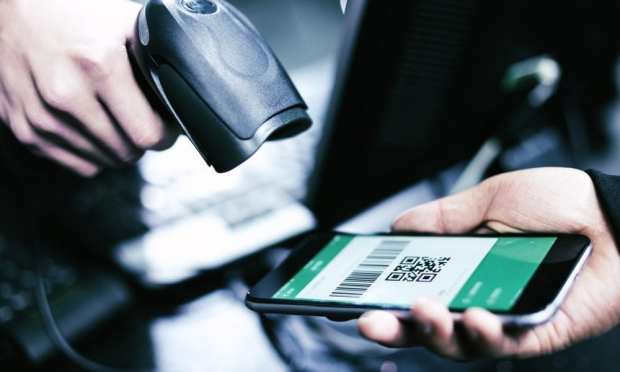Closing In On Contactless Payments’ Tipping Point

Contactless payments have yet to achieve critical mass in the U.S., at only about 3 percent of transactions, according to NMI. Nick Starai, chief strategy officer at the firm, tells PYMNTS explains why the stars are aligning toward a tipping point, as use cases in mass transit and retail settings gather steam.
The pace of technological adoption can be uneven and, depending on where one looks, even lumpy. Consider the case of contactless payments, where tap-to-pay is increasingly embraced by consumers in Europe, but only a small fraction of payments in the U.S. avoid the swipe or chip card reader — about 3 percent, according to NMI.
In an interview with PYMNTS, Nick Starai, chief strategy officer for NMI, said a number of factors may be leading contactless payments toward a tipping point to go mainstream, which he expects to happen sooner rather than later. What’s taken so long, though?
“Card issuers in the U.S. have been slow to issue contactless cards due to limited acceptance points at the point of sale,” Starai said. “In the meantime, merchants [that] are early adopters willing to purchase more expensive payment terminals can accept Apple Pay and Google Pay contactless transactions via phones and tablets, while card issuers expand their contactless card issuance programs.”
Misplaced Security Concerns?
The move toward greater contactless adoption in the U.S. has had uneven starts and stops, noted Starai, as concerns have swirled around security. He recounted to PYMNTS that, several years ago (prior to EMV chip cards), JPMorgan Chase had its own contactless card, Blink, operating across near-field communication (NFC), which transmitted unencrypted data when users tapped the card at the point of purchase.
However, he added, “you probably remember the news articles about people walking around, trying to tap wallets and steal credit card numbers.” Negative publicity did not help contactless adoption, and the bank decided to sunset the cards in 2014 ahead of the launch of EMV chip cards, which provide better security for both contact and contactless card technology.
Now, Starai said, “EMV chip card technology is significantly more secure than magnetic stripe transactions, whether it’s contact or contactless. And, essentially, the way EMV technology works is through one-time use cryptography that’s generated when data is read from the card.”
The Near-Term Outlook
Looking at tailwinds that might spur more uptake in tap-to-pay, there’s a fundamental difference between the U.S. and international markets, said Starai. He noted that, in some non-U.S. regions, card brands have mandates on their member banks for contactless card issuance.
In the U.S., by contrast, the approach has been to let market forces take over rather than rely on mandates, he explained. Thus, there have been the debuts of Apple Pay and Google Pay, and Visa’s prediction that there will be as many as 100 million contactless cards in circulation in the U.S. by year’s end.
“As card issuers begin accelerating their issuance of cards with EMV contactless capability, we believe we’re going to see contactless surge,” he said.
Starai added that there may be some precedent in place for that momentum — at least, in terms of arming consumers with the means to make contactless payments.
“If we look at recent time frames around U.S. EMV migration, member banks were able to complete that chip card reissuance in an extraordinarily short time,” he continued. “We went from nobody having any chip cards in their wallets to everybody having one or more chip cards. So, historically, the banks have shown they can actually move pretty quickly.”
Put that together with the actual acceptance side of it (where, from the merchant side of the equation, the cost of these contactless-enabled terminals has finally come down), and Starai said the stars are aligning for a contactless surge. The infrastructure (namely, terminals) needed for contactless payments has gone from a cost of nearly $700 to, in some cases, below $200.
The Use Cases
The reason for merchants to invest now, even before demand picks up, is to “surf the wave,” Starai said.
As merchants have the infrastructure in place, and consumers have the cards in their pockets, use cases will start ramping up, he noted. Retail seems a relatively safe bet, as many big-box retailers are already equipped for contactless payments. Though smaller merchants have been slower to bring that functionality on board, Starai pointed out that tap-to-pay helps speed the number of transactions that may occur when lines form — which, of course, boosts the top line. There’s also a duality of sorts that may offer a positive feedback loop, as adoption within various modes of mass transit in major metropolitan areas may feed comfort and familiarity for consumers to use contactless at the retail register.
It’s been well-reported that, in the U.K., the London Transport System began accepting contactless payments in 2015. Now, more than 1 million transit passengers use contactless payment methods each day. In one recent announcement, the New York City Metropolitan Transit Authority said it will upgrade its payment systems to accept contactless payments at turnstiles.
“We’re probably still a bit away [from the London example], but, in the near term, these mass transit systems are planning to offer tap-on and tap-off with contactless credit cards,” Starai said. “If you use your contactless credit card during your daily commute, you’re more likely to go to Nordstrom and tap, or other big-box stores, and then also try tapping the card at a local coffee shop.”
Looking ahead, “based on our experience in other markets like the U.K., once you hit critical mass, it all starts happening pretty quickly,” Starai said.
